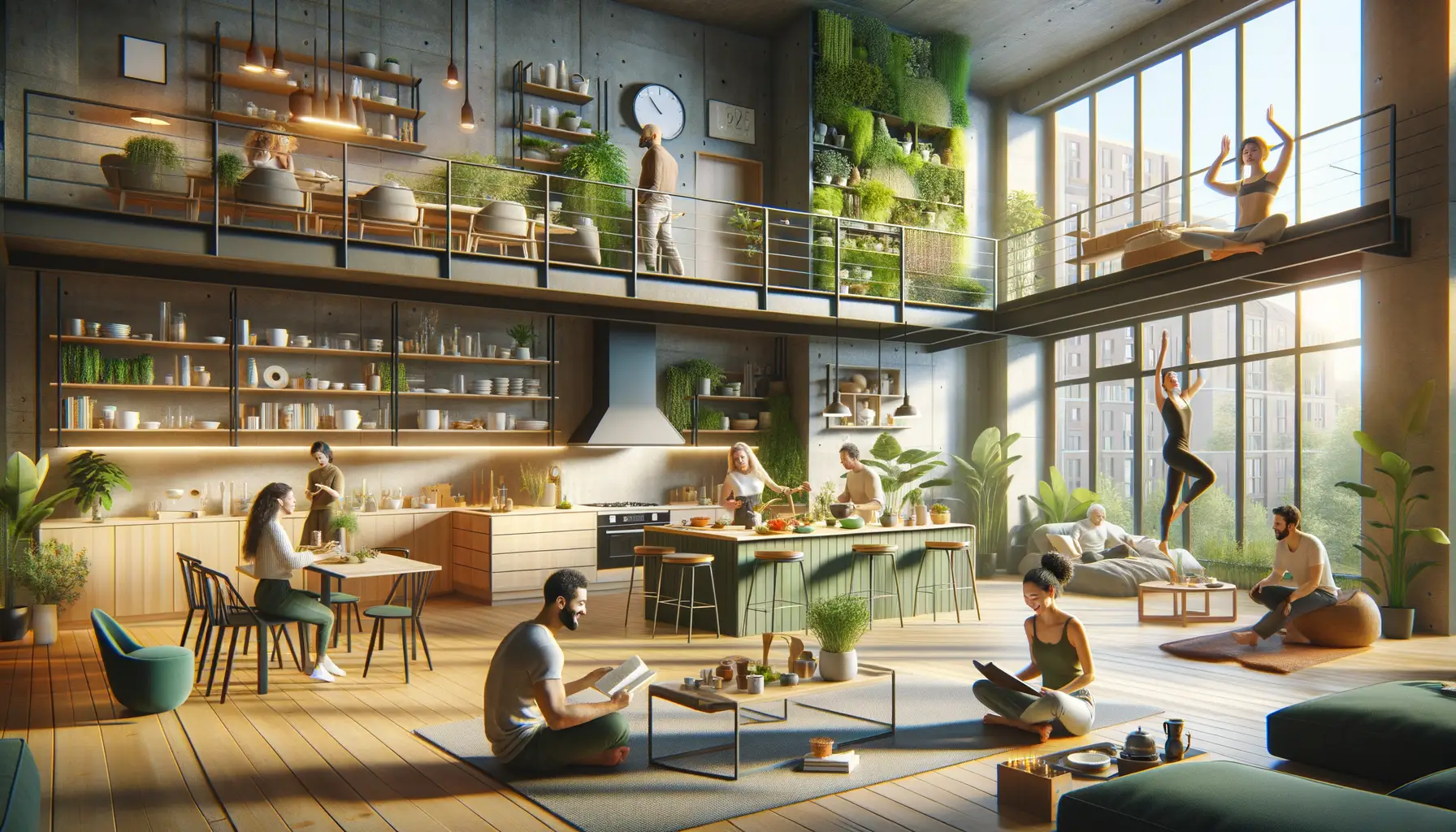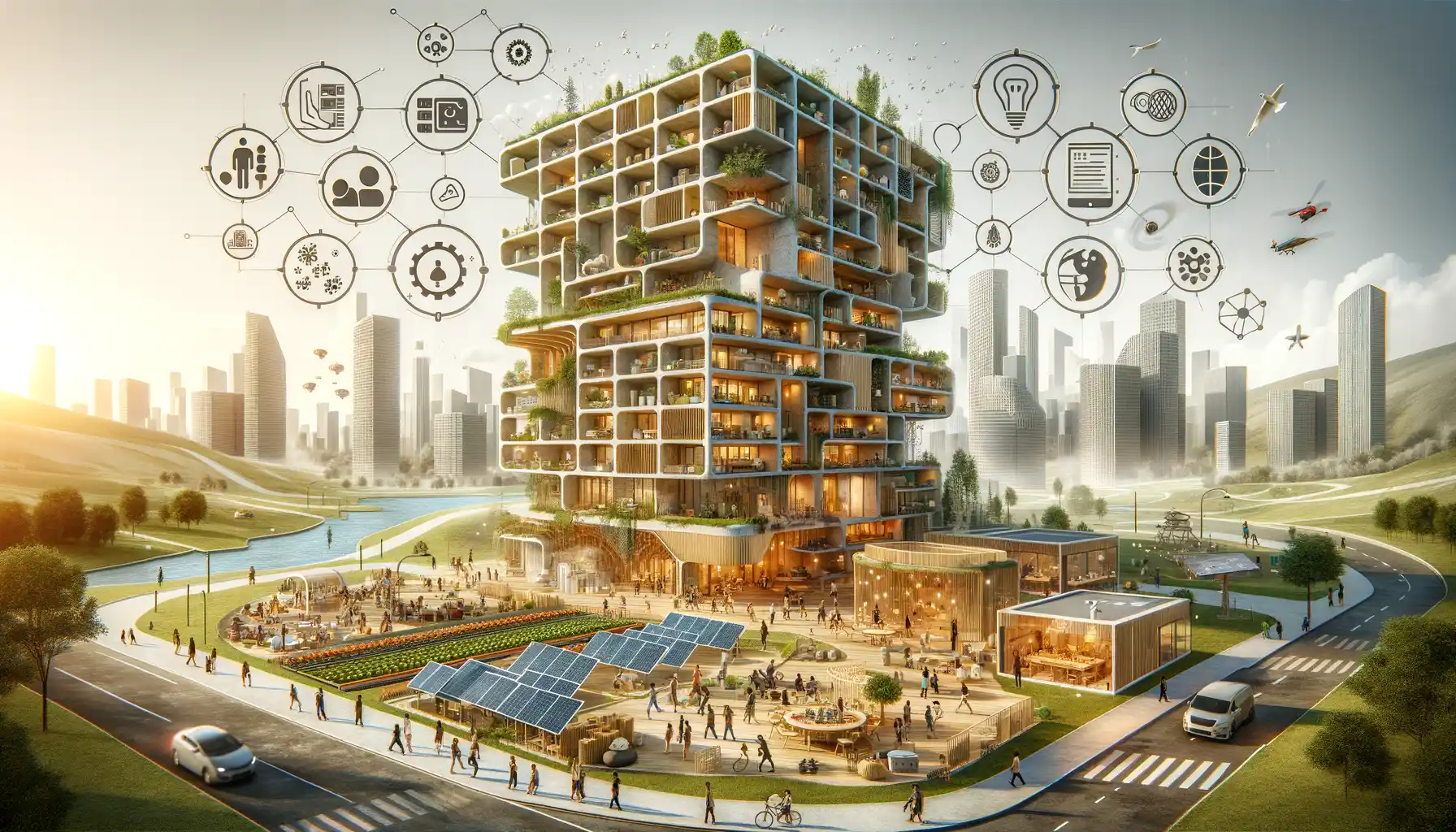Understanding the Concept of Co-Living Spaces
Breaking Down the Buzz: What Is Co-Living?
Imagine walking into a lively, sunlit home where everyone knows your name, and community comes as naturally as your morning coffee. That’s the essence of co-living spaces—modern urban hubs designed to bring people together while keeping individual needs at heart.
At their core, co-living spaces are more than just shared apartments or dorm rooms for grown-ups. Think of them as a beautifully curated blend of private sanctuaries and vibrant common areas, where neighbors are not strangers but a network of like-minded individuals. Picture a shared kitchen filled with laughter as dinner sizzles on the stove, or an impromptu movie night in the community lounge. This isn’t just living. It’s connection on an entirely new level.
The Secret Sauce: Flexibility and Intentional Design
What makes these spaces thrive? Their versatility. Many co-living setups include:
- Flexible leases that fit your lifestyle, whether you’re a digital nomad or a city dweller unsure of tomorrow’s plans.
- All-inclusive perks like Wi-Fi, cleaning services, and even stocked pantries. Say goodbye to chasing down utility payments!
Through intentional design and shared experiences, co-living transforms “home” into a dynamic space that balances community and individuality. It’s about living well, together.
Key Benefits of Co-Living in Urban Environments

Why Co-Living Feels Like a Breath of Fresh Air in the City
Stepping into the world of co-living is like walking into a shared storybook. Imagine this: waking up in a sunlit apartment with buzzing energy around you, knowing you’re more than just a tenant—you’re part of a small, thriving community. Let’s face it, living in urban spaces can feel isolating, but co-living rewrites that narrative.
Here’s the magic: with co-living spaces, you’re not just renting a room; you’re stepping into a lifestyle where shared dinners, brainstorming sessions, and spontaneous movie nights are everyday staples. And the savings? A cherry on top. By sharing costs like utilities, cleaning services, even Netflix subscriptions, you can stretch your budget without sacrificing comfort.
- Connection over isolation: Build genuine relationships in spaces designed for meaningful interaction.
- Flexibility and affordability: Short-term leases and all-inclusive prices eliminate headaches.
- Shared amenities: Rooftop gardens, coworking lounges, fitness zones—modern luxuries without the sky-high rent.
Design Meets Convenience: The Perfect Urban Lifestyle
Co-living spaces don’t just serve practicality; they ooze style. Picture curated interiors that scream Pinterest-worthy—sleek furniture, quirky decor, and communal kitchens that feel more like a trendy café than a shared space. Oh, and let’s not forget the convenience factor. Need Wi-Fi? It’s already set up. Forgot to grab shampoo? Your roommate has you covered.
It’s not just about space; it’s about living smarter and warmer in the heart of the city. Isn’t that what we’re all craving?
Challenges and Considerations of Co-Living Spaces

What Makes Co-Living Tricky?
Co-living spaces promise connection, convenience, and an affordable slice of urban life—but let’s be real, it’s not all sunshine and shared kitchens. For starters, the idea of living in close quarters with strangers might feel like jumping into the deep end of a social pool. While some thrive in it, others might find themselves longing for a locked door and absolute silence.
Here’s something to think about: how do you deal with different lifestyles under one roof? Maybe your flatmate loves midnight jam sessions, while you’re trying to clock in eight hours of sleep for tomorrow’s early meeting. Personal habits—like cleanliness quirks or fridge-hoarding tendencies—can turn minor annoyances into full-blown frustrations.
- Privacy: Striking a balance between community and “me time” can be a tightrope act.
- Shared responsibilities: Dishes don’t magically clean themselves, and someone has to take out the trash—again.
- Conflict resolution: You’ll need your inner diplomat when disagreements arise.
Financial and Logistical Hiccups
Beyond interpersonal dynamics, practical concerns can sneak up on you. Sure, that rent seems budget-friendly, but are utilities included? What happens if one roommate suddenly leaves? Some co-living arrangements have terms that read like a maze, with surprise fees or unclear processes for handling disputes.
And let’s not forget about long-term commitment. These spaces often cater to short stays, which is fantastic for flexibility—but a headache if you’re planning to stay put for years.
In short? Co-living can be a beautiful dance—just watch where you step!
Emerging Trends Shaping the Future of Co-Living

Revolutionizing Social Living Through Tech
The future of co-living is leaning heavily into the digital revolution—think less “just a room to share” and more “smart ecosystems designed for connection.” Picture this: walking into a space where your smartphone syncs instantly with everything. Lights adjust to your mood, communal kitchens are equipped with shared pantry apps to track groceries, and booking shared spaces happens in seconds through intuitive platforms.
And it’s not just the gadgets; tech-enabled co-living spaces are starting to foster more meaningful relationships. For example, some communities now use AI-driven matching systems to pair housemates by shared interests—because who doesn’t want a roommate that also loves late-night board games or Sunday hikes?
Designing for Wellness and Flexibility
Forget cookie-cutter apartments—modern co-living spaces are embracing a new wave of human-centric design. Think work-from-home setups with ergonomic furniture, flexible layouts that morph from yoga studios to conference rooms, and biophilic designs that make you feel like you’re living in the middle of a lush greenhouse.
As mental health takes center stage, many co-living providers now prioritize spaces for self-care. Imagine cozy meditation pods, private recharge zones, or even wellness-focused amenities like shared rooftop gardens or group therapy sessions led by professionals.
- Eco-conscious designs: solar-powered buildings, recycling hubs, and zero-waste initiatives.
- Community-first layouts: inviting social nooks, shared libraries, and cultural event spaces.
It’s no longer just about sharing a roof—it’s about creating a lifestyle that feels personalized, purposeful, and electrifyingly modern.
How Co-Living Is Transforming Urban Communities

Building Bridges, Not Walls
Imagine walking into a space that feels alive—conversations buzzing in shared kitchens, neighbors swapping weekend plans, and friends collaborating on creative projects like they’ve known each other for years. That’s the magic of co-living. In a world where urban life can often feel isolating, these spaces are creating little pockets of connection, turning high-rises into communities instead of just places to crash.
Co-living has this unique way of breaking down barriers. You might find yourself gardening on a rooftop with someone from a completely different walk of life or attending a movie night organized by your neighbor who moonlights as a filmmaker. It’s not just about sharing square footage; it’s about shared experiences. It’s people connecting over house dinners, solving problems together (hello, broken coffee machine), or simply celebrating life in little everyday moments.
- Social diversity: Meet professionals, students, artists, and entrepreneurs—all under one roof.
- Sustainability in action: From co-owned bikes to energy-efficient designs, these communities are shaping greener cities.
- More than roommates: It’s about finding your tribe while fostering inclusivity and kindness.
The Ripple Effect on Urban Neighborhoods
The impact doesn’t stop at the front door. Co-living spaces are injecting vibrancy into surrounding areas by hosting local pop-ups, supporting neighborhood businesses, and creating platforms for cultural exchange. Picture this: a workshop led by a resident chef becoming a local event, or an open mic night spilling joy into nearby cafés.
It’s like co-living spaces are playing matchmaker between cities and their inhabitants. By nurturing human connection, they’re transforming concrete jungles into hubs of creativity, warmth, and collaboration.
